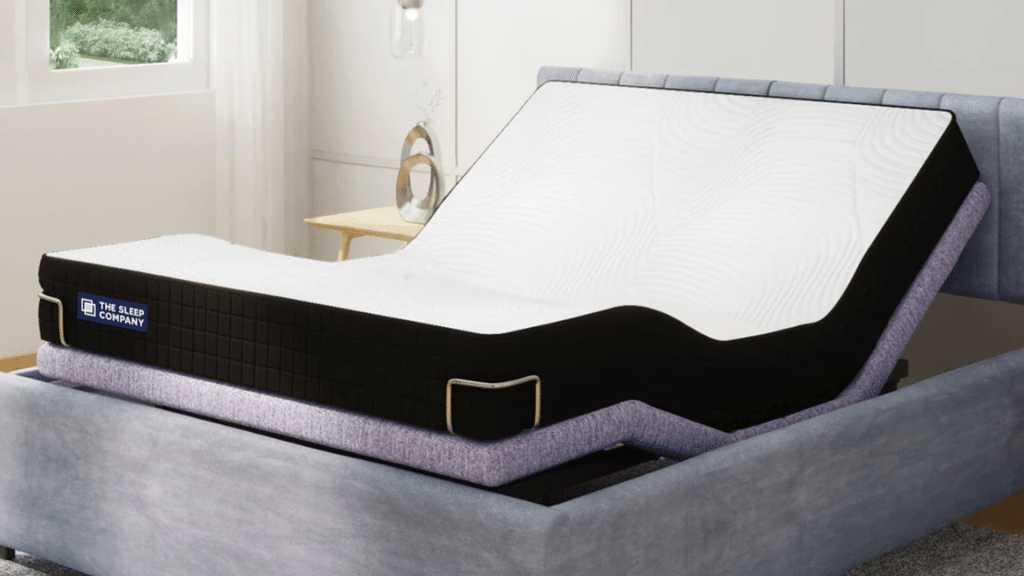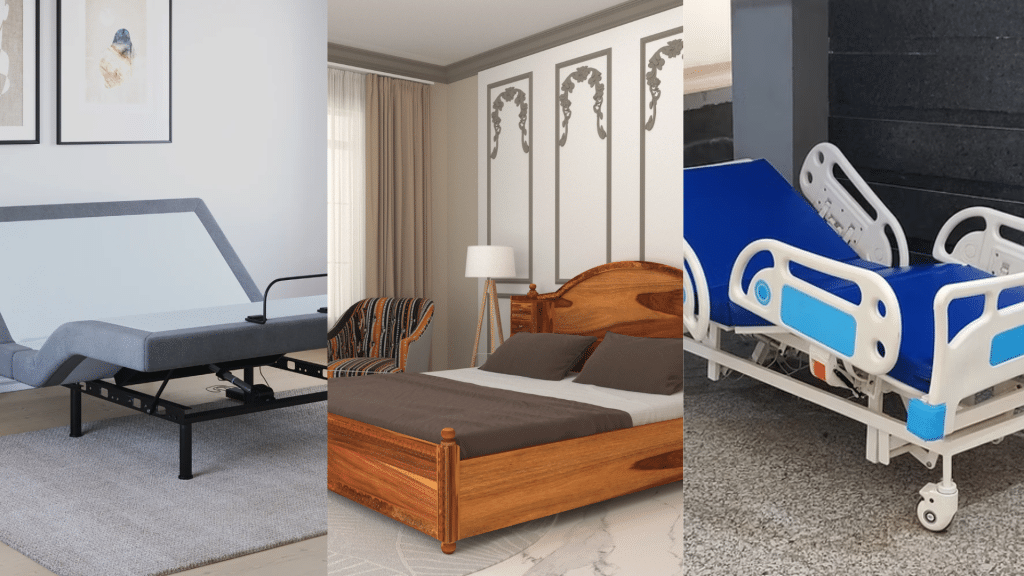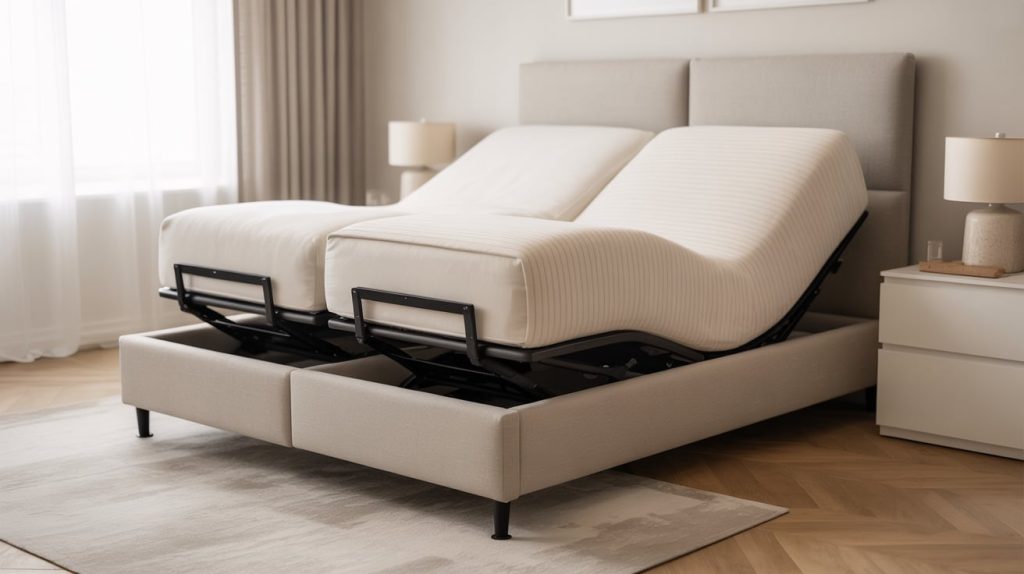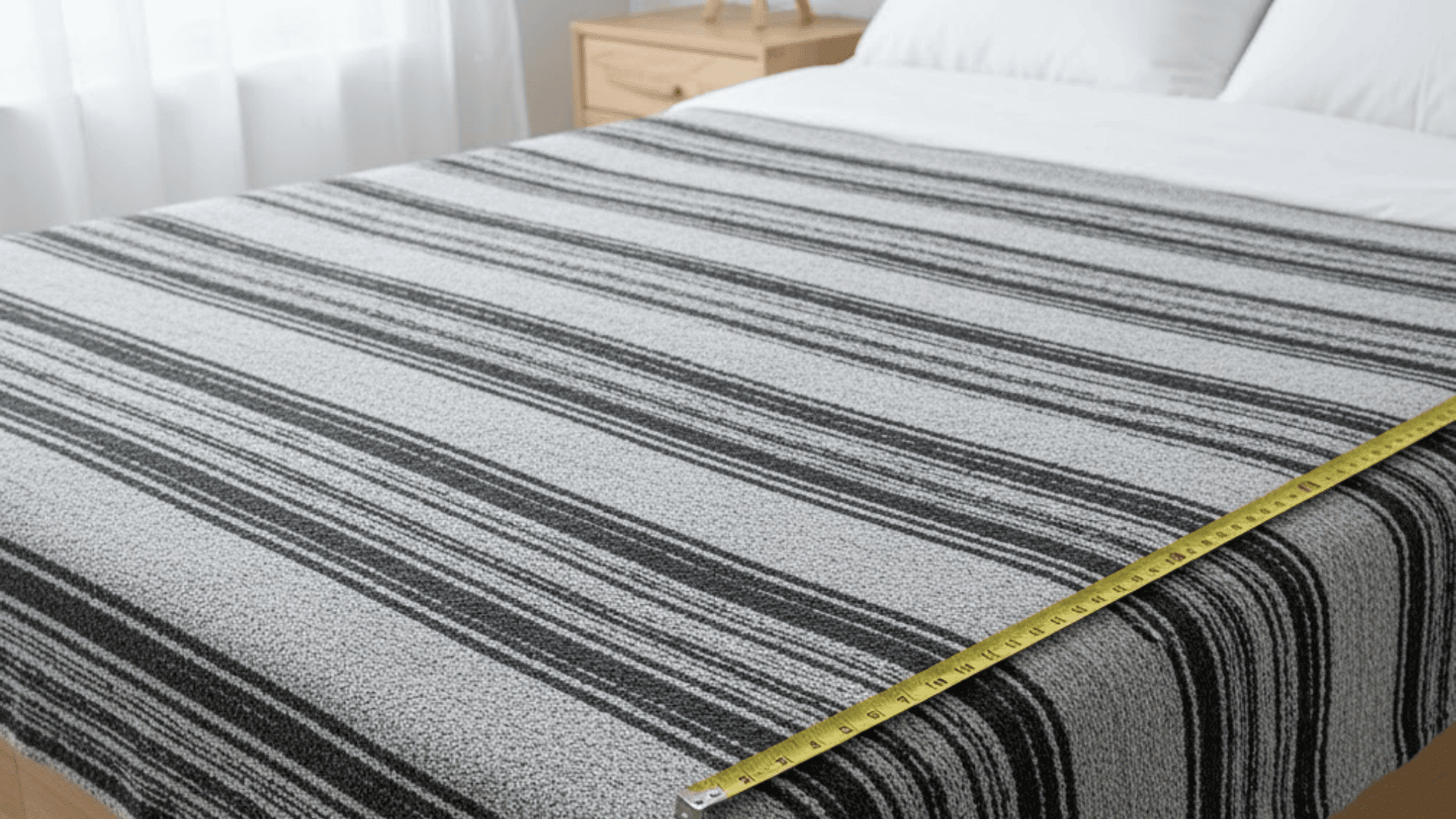I know how frustrating it feels to wake up sore, stiff, or completely unrested, like your bed worked against you all night. If you’ve been wondering if your setup is the problem, you’re probably asking yourself: Are adjustable beds worth it?
I’ve looked into what they actually offer, and I’m breaking it down so you can decide what’s right for you. You’ll see how they help with pain, sleep quality, and everyday comfort, without wasting time or money on features you don’t need.
Let’s get you set up so you can sleep well and wake up feeling like yourself again.
What is an Adjustable Bed?
An adjustable bed is a sleep system with a motorized base that lets you raise or lower the head and foot of the bed. This flexibility allows you to find a more comfortable position for sleeping, reading, or relaxing.
Some models are electric with remote controls, while basic versions may require manual adjustment.
You can choose a single base for one person or a split king, which lets each side move independently, perfect if you and your partner have different sleep preferences or routines.
Quick Answer: Are Adjustable Beds Worth It?

For many people, the right adjustable bed can bring noticeable sleep improvements, especially when comfort, pain relief, or flexibility matter. The top benefits include pain relief, better circulation, reduced snoring, and more restful sleep.
However, they’re not ideal for everyone. If you’re on a tight budget or have limited space, the high cost and maintenance might outweigh the perks. Adjustable beds work best when paired with the right mattress and used consistently.
In short, whether an adjustable bed is worth it depends on your personal comfort needs and lifestyle.
Health Benefits of Adjustable Beds Explained
Adjustable beds can improve how your body feels and functions during sleep, from blood flow to digestion to breathing ease. Here’s a quick look at some benefits they offer:
Better Circulation and Pressure Relief
Elevating your legs can help reduce swelling and improve blood flow, especially if you sit or stand for long hours. People with varicose veins, diabetes, or poor circulation often feel less discomfort overnight.
Adjustable beds also help reduce pressure on hips, shoulders, and lower back by shifting weight evenly, which can prevent stiffness or soreness in the morning.
Improved Digestion and Breathing
Sleeping with your head slightly raised can help with acid reflux and nighttime heartburn. It keeps stomach acid from rising into your throat. This same position also supports easier breathing by opening up your airway, which helps reduce snoring and congestion.
People with mild breathing issues or allergies may sleep more soundly with fewer interruptions.
Overall Sleep Quality and Comfort Gains
Being able to adjust your bed to your exact needs makes it easier to fall and stay asleep. Whether it’s raising your knees, lifting your head, or finding a neutral position, customizable settings allow you to sleep without constant tossing and turning.
That means deeper rest, fewer aches, and better energy the next day for most people who struggle with comfort in flat beds.
Adjustable Bed vs. Other Beds

Here’s a quick comparison to help you see the main differences between adjustable, traditional, and standard flat beds at a glance:
| Feature | Adjustable Beds | Traditional Beds | Electric Beds |
|---|---|---|---|
| Comfort | Custom head and foot positions | Fixed position | Basic electronic adjustments |
| Price | $500–$5,000 | $100–$1,500 | $1,000–$3,000 |
| Health Benefits | Supports back pain, sleep apnea, and arthritis | Basic support only | Some comfort help, less health-focused |
| Movement | Heavier, harder to move | Lightweight and easy to move | Moderate weight, easier than adjustable beds |
| Noise | Some motor noise | Silent | May have light motor noise |
| Durability | 10–20 years with care | 5–10 years | Similar to traditional, it may need more upkeep |
If you’re healthy, sleep fine, and want a simple setup, a traditional bed might be the better fit for you.
Choosing the Right Adjustable Bed
Choosing the right adjustable bed depends on your budget, the features you need, and how you plan to use it. Budget models under $1,000 often offer simple head and foot lifts but may lack extras like massage or presets.
Mid-range options between $1,000–$2,000 typically include better materials and tech. Luxury models above $2,000 offer advanced features like massage modes, smart controls, and under-bed lighting.
For setup, some beds are DIY-friendly with clear instructions, while others require professional delivery and assembly, especially heavier or split models. Consider space, strength, and convenience before choosing how to install your new bed.
Adjustable Bed Shopping Guide
Make smarter buying choices by understanding mattress fit, return policies, and what to expect before you commit to a setup.
Compatibility Guide: Which Mattresses Work Best?
These mattress types respond differently to adjustable bases. Here’s a quick breakdown to help you decide which may fit you better:
| Mattress Type | Adjustable Bed Compatibility | Key Pros | Key Cons |
|---|---|---|---|
| Memory Foam | Excellent | Contours well, flexible, and silent | Can trap heat; some feel too soft |
| Hybrid | Good | Combining support and flexibility | Heavier, pricier, coil tension varies |
| Innerspring | Poor to Fair | Affordable, bouncy feel | Rigid, poor flex, wears out with bending |
Memory foam and hybrid mattresses are ideal for adjustable bases, while innerspring models are usually too stiff or bulky.
Avoid using mattresses that are too thick, inflexible, or poorly made. These can reduce performance or even damage your adjustable base over time. Look out for:
- Mattresses over 14 inches thick
- Stiff coils or little flexibility
- Weak edge support or cracking foam
Return Policies and Warranties
Before you buy, check the return window and restocking fees; some brands charge extra if you change your mind. Look for warranties that cover both the base and motor, not just the frame.
Most high-quality adjustable beds include 10-year warranties, but read the fine print for exclusions. If possible, choose a company with in-home trial periods so you can test comfort and performance before fully committing.
Who Should Consider an Adjustable Bed?
Certain groups of people gain the most from adjustable beds due to pain relief, sleep improvement, or daily mobility support.
1. People with Back or Joint Pain
Adjustable beds let you adjust your legs or back to reduce pressure on sore joints, hips, and lower back. This can relieve stiffness and pain, especially for people with arthritis or sciatica.
Sleeping in a slightly inclined position can also help support spinal alignment, so you wake up feeling more rested and less achy in the morning.
2. Seniors or Those With Limited Mobility
Getting in and out of bed can be tough as you age. Adjustable beds help by lifting you into a seated position. This makes daily movement easier and safer for seniors or people with limited strength.
Many beds also come with remote controls and preset settings that allow users to change positions without needing help.
3. Snorers and Sleep Apnea Sufferers
If you snore or deal with mild sleep apnea, an adjustable bed can help. Improving your head changes the angle of your throat and jaw, which may reduce vibration and airflow blockage. While it’s not a medical cure.
4. Adjustable Beds Work for Different Sleep Positions
Back and side sleepers tend to benefit most from adjustable beds. Side sleepers may feel relief from hip or shoulder pressure. Back sleepers can raise their legs and head for full-body support.
Stomach sleepers may not benefit much, as most adjustments don’t support that position well and can feel uncomfortable.
Conclusion
An adjustable bed can completely change the way you sleep and how you feel when you wake up. From easing aches to improving circulation and overall comfort, the benefits are often noticeable right away.
When you’re asking yourself, “Are adjustable beds worth it?,” think about your personal needs, budget, and the space you have to work with.
Pairing the right base with a supportive mattress is key if you want lasting comfort and performance. I’ve seen how even small tweaks to a sleep setup can lead to deeper rest and better mornings.
Start by deciding which features matter most to you, then build from there.
If you want more practical, real-world tips for improving your sleep and bedroom comfort, check out my other blogs for solutions that actually work for your lifestyle.









